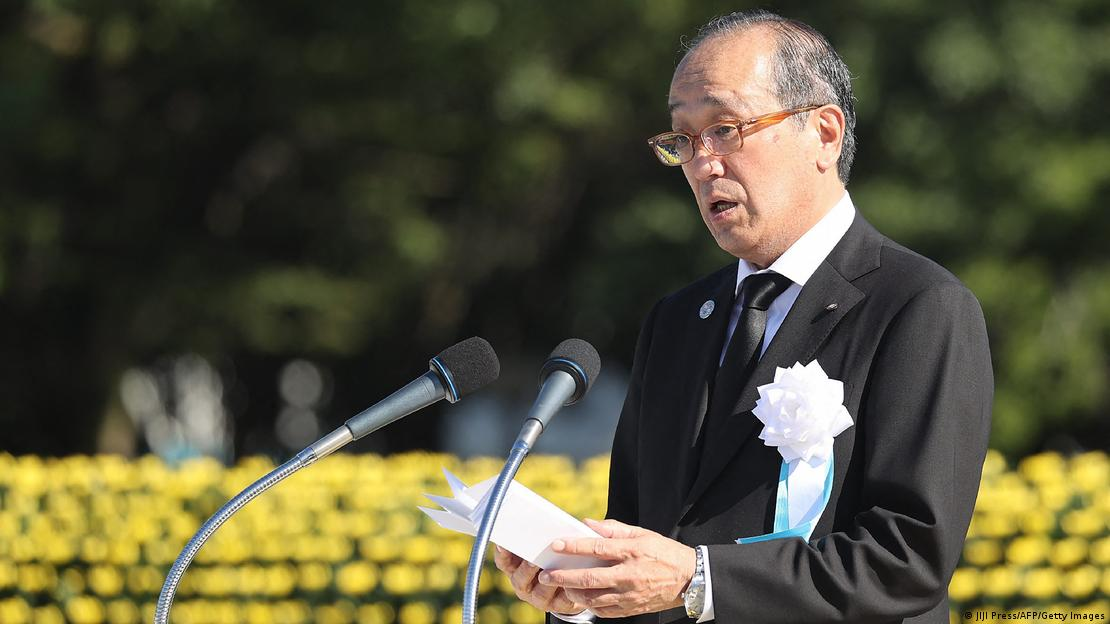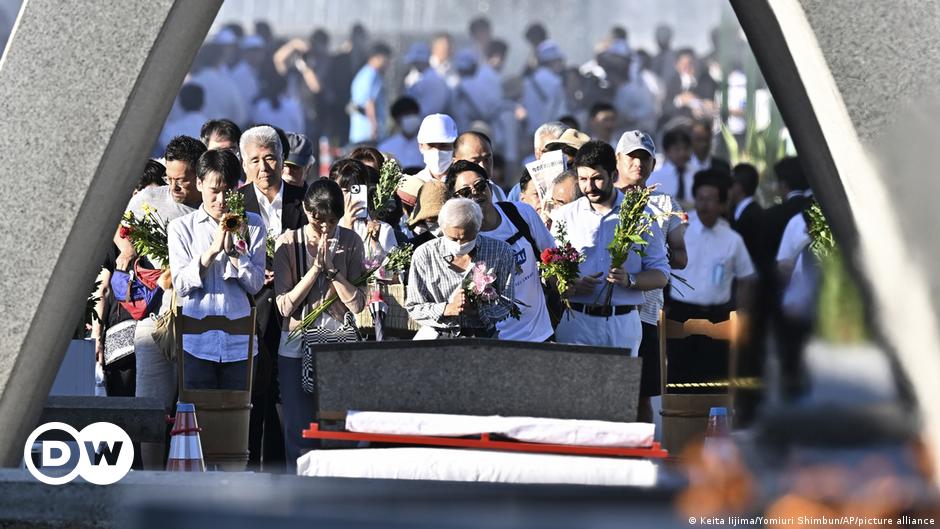Japan on Sunday commemorated the 78th anniversary of the atomic bombing of Hiroshima in the final phase of World War II.
Considering the growing nuclear threat worldwide, the mayor of Hiroshima Kazumi Matsui called for the abolition of nuclear weapons and described the nuclear deterrence policy of G7 as “folly.”
“They must immediately take concrete steps to move us from the dangerous present to our ideal world,” he said as a peace bell rang on Sunday at 8:15 a.m. — exactly when on August 6, 1945, US bomber Enola Gay set off the world’s first atomic bomb dropped on a population center.
This year, the G7 summit took place in Hiroshima, which happens to be Japan Prime Minister Fumio Kishida’s home constituency

“Leaders around the world must confront the reality that nuclear threats now being voiced by certain policymakers reveal the folly of nuclear deterrence theory,” Hiroshima Mayor Kazumi Matsui said at the ceremony which was also attended by Kishida.
At the memorial ceremony about 50,000 people, including aging victims who survived the bombing, gathered and observed a moment of silence.
Drums of nuclear war beating again: Antonio Guterres
The anniversary of the Hiroshima bombing was commemorated amid the growing threat of nuclear weapons propelled by Russia’s invasion of Ukraine.
The issue poses a tricky balancing act for Kishida. Japan is traditionally an advocate of nuclear disarmament, in no small part because of the legacy of the attacks on Hiroshima and then Nagasaki three days later.
However, it also supports the partly nuclear-armed G7’s group stance that members with atomic weapons shall retain them for as long as they’re a necessary deterrent against other nuclear powers.
“World leaders have visited this city, seen its monuments, spoken with its brave survivors, and emerged emboldened to take up the cause of nuclear disarmament,” he said in remarks read by a UN representative. “More should do so, because the drums of nuclear war are beating once again.”
 The American atomic bomb which was dropped on Hiroshima was nicknamed “Little Boy.” It is thought to have killed as many as 140,000 people by the end of 1945. Three days later, the US dropped a second bomb on Nagasaki. It is believed to have killed up to 70,000 over the next four months.
The American atomic bomb which was dropped on Hiroshima was nicknamed “Little Boy.” It is thought to have killed as many as 140,000 people by the end of 1945. Three days later, the US dropped a second bomb on Nagasaki. It is believed to have killed up to 70,000 over the next four months.
A few days after the bombings, on August 15, Japan made an official announcement that it was surrendering. Soon after, on September 2, Japan formally capitulated, bringing an end to World War II in Asia.
Whether using the bombs brought about a speedier, and possibly even more bloodless, end to the war or whether it was an ultimately unnecessary show of force remains a fierce debate among historians almost eight decades on



Edit: I wasn’t saying anything about the bombing below only that if we had invaded the islands lots of American GIs would have died. Glad it didn’t happen for whatever reason(s).
My grandpa went into the US Army in 1939 and not due to Pearl Harbor. As Europe wound down they started setting up who would invade and how many would die when we invaded the Japanese home islands. I probably wouldn’t be here if that happened.
I recall reading but now can’t find it that the body bags manufactured for this invasion and then not used are the ones that were used for Korea, Vietnam, and even more recent.
Removed by mod
Edited mine above as I don’t think that I did a good job of highlighting my sidebar to note the invasion didn’t happen for whatever reason(s) of which I’m thankful.
If you think Us gave UK the tech during ww2 then I question your research. The UK had independent research with “tube alloys” following the Frisch peierls memo from university of Birmingham (the original UK one not Alabama)
The UK pushed the us to use its industrial might to followup their work on uranium. The Brits were leaders on explosive lens (albeit from work of an eventual soviet traitor) among others. Los Alamos was a collaboration of UK, Canada and US plus a few other allies. The UK then used "what they learnt " at Los Alamos to carry out their “high explosives” project while locked out in late 40s early 50s and only once they showed independant build of a thermonuclear (fison fusion) bomb in 52 were they allowed back in the 1952 mutual defence agreement.
Stop right there. If the war was ‘already over’, then why didn’t Japan surrender until after being nuked?
I heard they were still.using those bags for the Iraq/afrghan wars of 2000s
Also the purple hearts and some other medals we built and didn’t need.